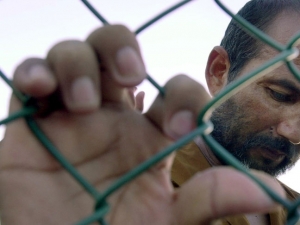Source: Auskar Surbakti, SBS

As the federal government’s refugee swap deal with Malaysia hangs in the balance, Prime Minister Julia Gillard has ruled out sending asylum seekers to Nauru.
Instead, the government hopes that by sending boat arrivals to the back of the refugee processing queue in Malaysia, others will think twice about making the journey to Australia.
But the idea of a queue has been challenged by the United Nations and by former refugees in Australia.
Najeeba Wazefadost fled Taliban attacks when she was 12-years-old, arriving in Australia by boat in 2000.
”I knew going on that boat, getting into that big Pacific Ocean, I am signing the contract of death for me or for my family,” Wazefadost said.
“But I said it’s better for me to die in this ocean peacefully rather than dying or getting killed by the Taliban back in my country”.
Like many other asylum seekers, she’s been accused of ‘jumping the queue’ because she didn’t register with the UN refugee agency or wait in a camp for resettlement.
But Ms Wazefadost says that was never an option.
”With UNHCR, it’s not even accessible or approachable to the Afghans anywhere. They don’t even know what it is, they don’t even know where it is.
“There’s no proper way. If you need to survive, if you want to live, you will take any opportunity that comes your way.
There’s a widespread view that there is a queue for the world’s 10-million existing refugees and for asylum seekers.
But Richard Towle from the United Nations Refugee Agency says that’s a myth.
”The simple fact, there isn’t actually a queue, there never has been. The fact that somebody waits in a desperate situation in another part of the world has nothing to do with the phenomenon of people coming and claiming asylum in Australia,” Towle said.
During the Tampa stand-off in 2001, the Immigration Minister at the time devised the Pacific Solution to deter boat arrivals, believing they shouldn’t take precedence.
Philip Ruddock’s policy of processing asylum seekers offshore was in line with the belief that they were avoiding proper channels in order to get an outcome sooner.
”There is a queue. It’s a very long queue but it doesn’t, because of its length validate the argument that you shouldn’t operate a system to assess those who need help most”.
Deng Adut was a child soldier from south Sudan who became a refugee when he escaped the rebel army in 1995.
He spent three years at a Kenyan refugee camp before he was resettled in Australia.
And despite his lengthy journey to Australia, Deng Adut doesn’t believe that boat arrivals are jumping a queue.
”I am happy that I came through the process. But the people that came to Australia by boat, they do not come here just because they admire Australia, they’re coming because they want protection and the protection we’re not giving them,” Adut said.